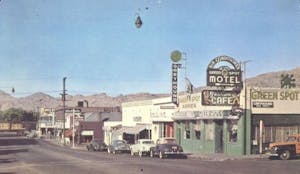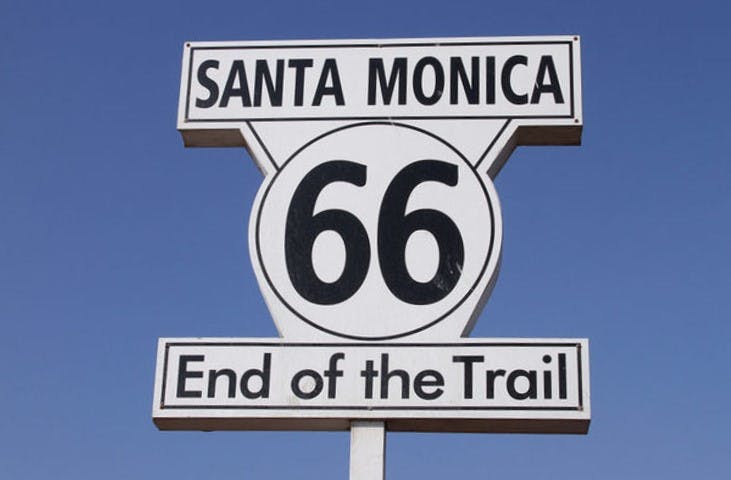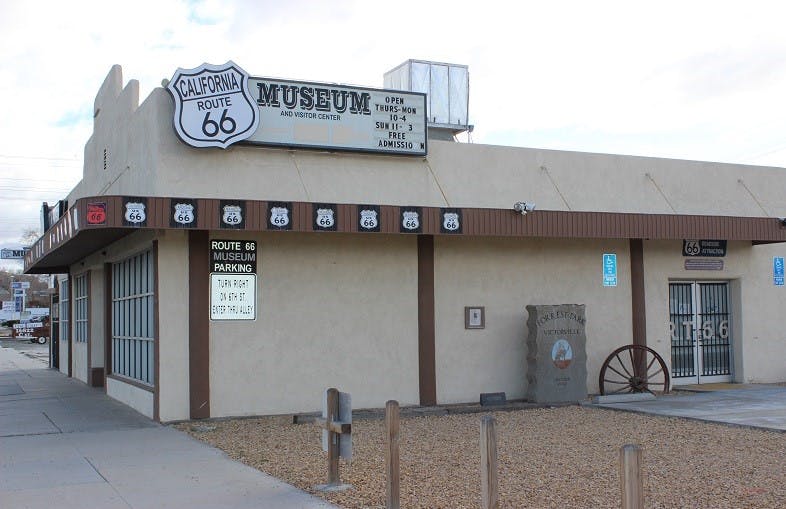Media | Articles
California Route 66 Museum fights to survive coronavirus, avoid closure

The way Sue Bridges sees it, the bad news is also the good news. Bridges, director of the California Route 66 Museum, may be scrambling to keep the museum afloat, but she knows she’s not alone. So she’s trying to stay positive.
“A lot of businesses are hurting right now. We aren’t the only ones,” Bridges says, referring to the havoc created by the coronavirus pandemic. “It’s just a tough situation, especially for non-profits. We need to be open to keep things going—and even then the traffic has been slow.”
The museum, housed in a 4500-square-foot building the Old Town section of Victorville, California, is located about 85 miles east of Los Angeles and 100 miles from the western end of Route 66 in Santa Monica. The eastern end of the historic highway is in Chicago. Route 66 is 2448 miles long, and it became a well-traveled route to the land of milk and honey, particularly from 1926, when it opened, through the 1950s. As expressways became the highways of choice, traffic waned on Route 66 and it was decommissioned in 1985. But it is still popular among car enthusiasts looking for a bridge to the past. Or, at least, it was. Things have changed a bit this year.
“It’s crazy thing,” Bridges says. “This is generally our busiest time of the year—it’s our international tourist season. But no one is able to travel, and now we’ve been shut down again. I’ve been talking to tour companies, and they have nothing going. A lot of them may just shut down until 2021.”
The California Route 66 Museum, which opened in 1995, contains artifacts and memorabilia related to the famous Mother Road. Among the more popular items in the museum’s collection is the very first Santa Monica “End of the Trail” booth, along with a Volkswagen “Love Bus” and 1917 Model T Ford.
Marketplace
Buy and sell classics with confidence
“People say, ‘You can’t close, you’re an institution,’” Bridges says. “But look at all the businesses that have closed already. A lot of those are institutions too.”
Bridges says the museum averages about 24,000 visitors annually. The non-profit organization owns the museum itself, but the group took out a mortgage on the building in 2016 to make improvements. To cover those payments, Bridges budgets a portion of the proceeds from the busiest months—March to October. She says that, with the help of a small business loan, the museum is currently up to date on its bills, but it won’t stay that way for long if the California shutdown remains in effect much longer.
Even with the doors open, the health concerns persist. “Ninety percent of our volunteers are 70 and older,” Bridges says. “They don’t want to take a chance, and who can blame them?”
California Governor Gavin Newsom originally ordered residents to a stay at home on March 19, and museums finally were allowed to open on June 5. Less than a month later, with COVID-19 cases on the rise again, the governor closed the state for a second time. Bridges says it takes about $2200 per month to pay mortgage, utilities, and insurance, plus another $2300 to cover the museum’s four paid positions: two cashiers, a gift shop manager, and Bridges’ position. Only $1200 came in during the three weeks the museum was open in June.

To raise money, the California Route 66 Museum is holding a drive-thru car show on Saturday, July 25, from 9 a.m. until 1 p.m. Bridges is asking collector car owners to enter the museum parking lot, leave a financial donation in the buckets provided, and exit on the other side of the building.
“No donation is too small. The car clubs around here have been very supportive over the years, and we’re hoping it continues,” she says. “We can’t gather, so this is the only way to do it.”
Donations can also be made online through PayPal (sent to cart66musm@gmail.com) or can be mailed to the following address: California Route 66 Museum, P.O. Box 252, Oro Grande, California 92368.
The museum isn’t the only one that has been hurt by the pandemic. Recently, the non-profit World of Speed in Wilsonville, Oregon, closed its doors for good and plans to sell off its assets—namely, its collection of classic automobiles—and disperse the funds to other 501(c)(3) museums and schools, as stipulated by Oregon law.
Hagerty historian Glenn Arlt isn’t surprised, but he’s saddened by the news. He says it’s a concern that began even before the coronavirus hit.
“We lost the Hudson Auto Museum in Shipshewana, Indiana, in 2018 and the Tupelo (Mississippi) Museum last year,” he says. “Let’s hope other museums that are struggling are able to survive this.”





